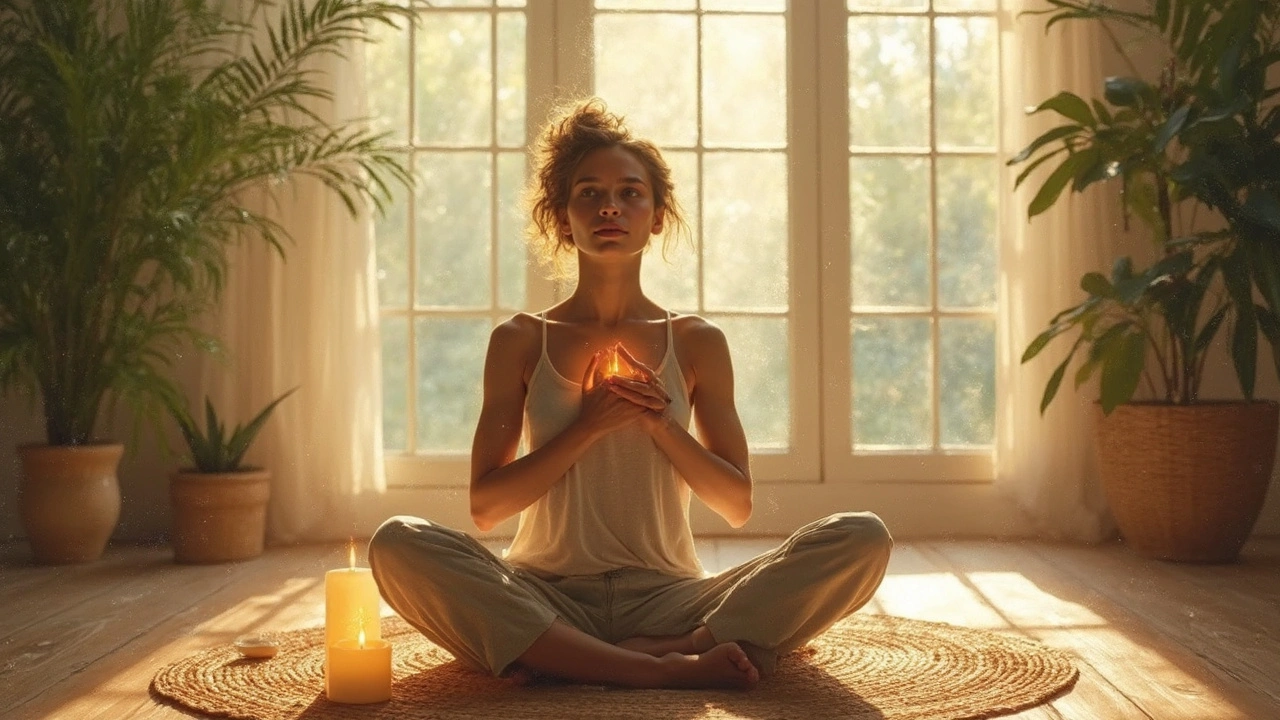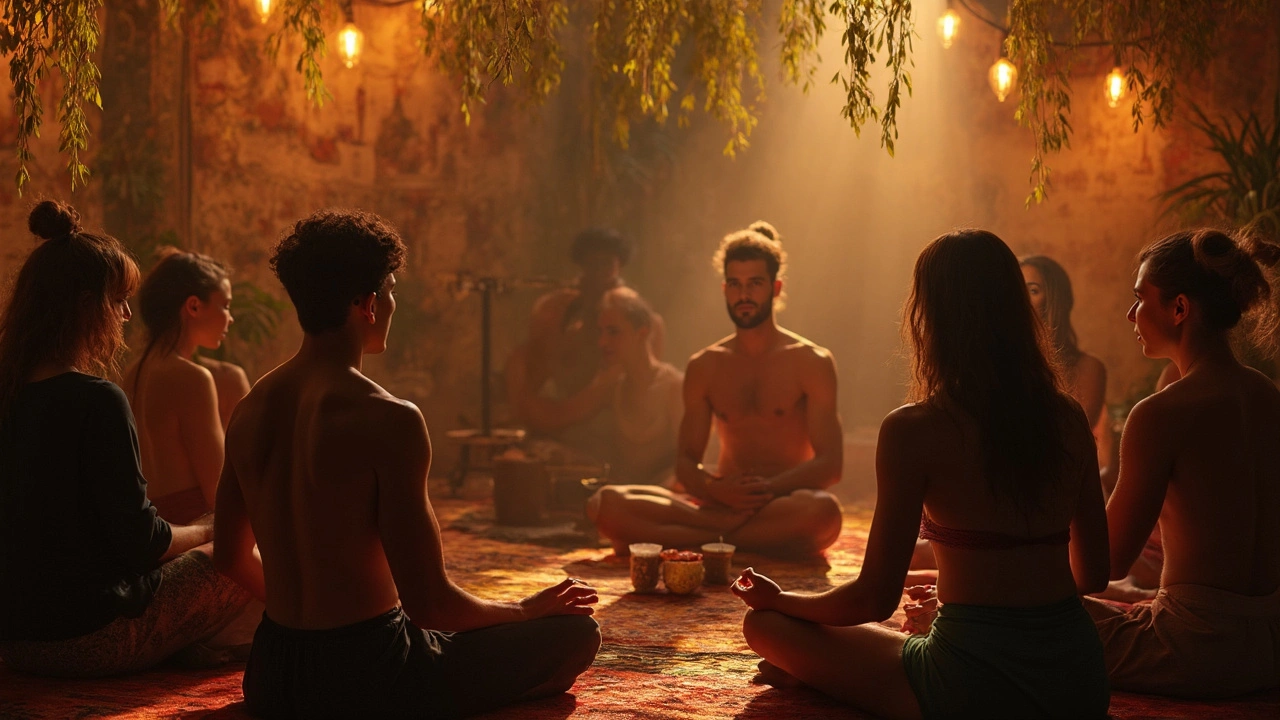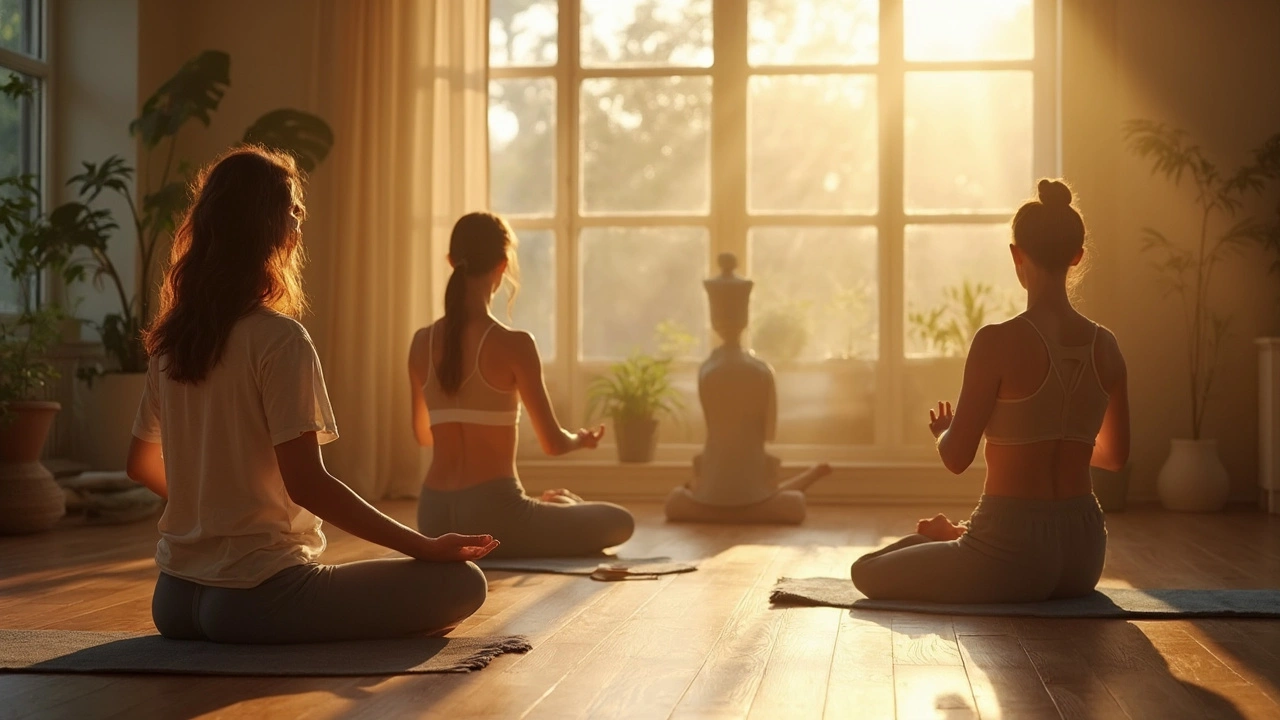Tantric Massage Benefits: The Healing Touch for Mind and Body

Ever wondered why more people are talking about tantric massage lately? It isn’t just hype. Whether you’ve had a stressful week or you’re curious about new ways to support your mental well-being, tantric massage offers a mix of relaxation and gentle energy work that’s totally different from your typical spa session.
If you think it sounds a bit mysterious, you’re not alone. But at its core, tantric massage is about helping your mind and body reconnect in a deep, mindful way. And you don’t need to be a spiritual guru or a yogi to benefit from this practice. Regular folks, like me and you, can walk away from a session feeling recharged, lighter, and less stressed—sometimes after just one appointment.
Before you book, there’s a bit to know: not all tantric massage therapists are the same, and every session can feel different depending on your goals. The main thing? It’s a safe space focused on your comfort and boundaries, so you’re always in control.
- Understanding Tantric Massage
- Mind and Body Benefits
- Types and How to Choose
- What Happens During a Session
Understanding Tantric Massage
If you ask around, most people think of massage as something you do to unwind tight muscles or ease back pain. Tantric massage is a whole different thing. It’s not just about rubbing out knots; it’s about helping you reconnect with your body and mind in a way other types of massage can’t touch.
At its heart, tantric massage blends traditional touch techniques with elements from tantra, an ancient practice from India that’s been around for thousands of years. This type of massage aims to relax you, boost your self-awareness, and help you feel more present. Instead of just focusing on muscles, tantric massage works with your body’s natural energy—sometimes called “life force” or prana.
Here’s what makes it unique:
- Tantric massage benefits go way beyond physical relaxation. People often say they feel emotionally lighter and mentally sharper after a session.
- Sessions usually involve slow, mindful touch rather than strong pressure. You might feel more tuned-in to every part of your body.
- It’s all about your comfort. Good practitioners will ask about your boundaries and preferences upfront, so you never feel awkward or rushed.
If you’re wondering how tantric massage compares to regular styles like Swedish or deep tissue massage, check out this quick breakdown:
| Type | Main Focus | Common Duration | Purpose |
|---|---|---|---|
| Tantric Massage | Energy, awareness, total body connection | 1-2 hours | Holistic wellness, emotional balance, intimacy |
| Swedish Massage | Muscle relaxation, blood flow | 45-90 minutes | Physical relaxation, stress relief |
| Deep Tissue Massage | Chronic pain, deep muscle tension | 30-60 minutes | Targeted relief, injury recovery |
Another interesting fact: a recent wellness survey showed a 40% jump in interest for tantric massage during the last two years, as more people tune in to mind-body approaches for their mental health. It seems this style of massage is having a real moment, and it’s not just for couples either—a lot of solo clients are looking for ways to boost self-esteem and reconnect after stressful life events.
Curious but nervous to try? That’s pretty normal! The next section will break down the benefits so you can see if it might be what you need.
Mind and Body Benefits
If you’ve never experienced it, you might not realize just how much a tantric massage can help both your body and your mind. This isn’t just about relaxation. It’s a practice that can have some measurable, noticeable effects.
First, let’s talk about stress. A lot of people report feeling less anxious and more present after a session. This is because tantric massage puts a big focus on mindful touch and slow breathing, which are both proven to activate your body’s relaxation response.
Need a break from those tight shoulders or that constant buzz in your head? Tantric massage uses slow, gentle movements that can help ease muscle tension, improve blood flow, and sometimes even lower your heart rate. There’s a reason I keep a regular appointment—my back used to be a battleground, and this was the only thing that really made a long-term difference.
Here’s a quick look at how people say they feel after a session:
| Benefit | Reported Improvement |
|---|---|
| Reduced Stress | 80% of clients feel calmer within hours |
| Better Sleep | Up to 70% report deeper sleep the same night |
| Muscle Relaxation | Most notice looser neck/shoulders in 1-2 sessions |
| Mood Boost | 60% say they feel more positive for days after |
Tantric massage isn’t only about physical touch. It’s also about emotional release. If you’ve got old stress, grief, or even just everyday tension stuck in your body, a good session can sometimes bring up big feelings in a safe space. It doesn’t have to be dramatic—some people just feel lighter or more open afterward.
- Boosts body awareness and confidence. It isn’t a fix for self-esteem overnight, but feeling cared for and accepted can do wonders long-term.
- Helps reconnect with yourself, especially if you get caught up in work or family duties and forget what it’s like to truly relax.
- Encourages better breathing—many therapists guide you through breathing techniques that help calm your mind right there on the table.
All this adds up to a real, lasting sense of well-being. It’s not a miracle cure, but if you’re looking for something that’s been shown to help people just like you feel happier and healthier, tantric massage deserves a spot on your self-care list.

Types and How to Choose
Tantric massage isn’t just one thing. There are several styles out there, and each brings its own approach and vibe to the table. It really makes a difference to pick the right one for your needs—whether you’re after deep relaxation, want to try something new with a partner, or are searching for relief from ongoing stress. Here’s what you should know about the options and how to make the right choice for you.
The most common types you’ll come across include:
- Classic Tantric Massage: This is the foundation style and often the starting point for most clients. It’s focused on slow, mindful touch and deep relaxation, helping you release tension and reset your mood.
- Kundalini Tantric Massage: This type targets energy centers (chakras), aiming to “wake up” energy from your spine and move it throughout your body. Many people say it’s energizing and emotionally uplifting.
- Yoni and Lingam Massage: These are gender-specific forms that focus on reproductive areas, meant to help release emotional blocks, teach body positivity, and bring confidence. They’re very intimate and should only be booked with someone you trust and feel comfortable with.
- Couples Tantric Massage: Designed for partners, these sessions focus on building connection, intimacy, and trust. Many couples use these massages to improve their communication and spice things up at home.
- Guided Self-Tantric Massage: Some therapists now teach online or in workshops, so you can learn techniques to practice solo at your own pace. These are great for beginners or anyone who’s a bit nervous to start with a professional.
Not sure which one fits your needs? Here are some tips to decide:
- Check the credentials and training of the therapist. Certified practitioners are usually happy to talk about their background.
- Decide on your comfort level and goals. Want stress relief? Go with a classic session. Looking for self-growth or deeper emotional healing? Kundalini or Yoni/Lingam massages might work.
- Ask about boundaries up front. A good therapist will discuss what to expect, including what is (and isn’t) part of the session.
- Read reviews and testimonials. The best sign of a pro is happy, returning clients.
Ever wondered how often people pick each type? Here’s a quick look, based on data from three large wellness centers in Europe in 2024:
| Type | % of Bookings |
|---|---|
| Classic Tantric Massage | 45% |
| Kundalini Tantric Massage | 20% |
| Yoni/Lingam Massage | 22% |
| Couples Tantric Massage | 10% |
| Guided Self-Massage | 3% |
The main takeaway? There’s no one-size-fits-all. Take your time, do your research, and be honest with yourself about what you’re comfortable with. Picking the right tantric massage style sets you up for the most healing and positive experience possible.
What Happens During a Session
No two tantric massage sessions are exactly the same, but they usually follow a pretty relaxed, client-focused flow. Before anything starts, you’ll chat with your practitioner. This isn’t just small talk—it’s where you get to share your comfort levels, boundaries, and what you want to get out of the massage. Don’t be shy about speaking up; this is your time.
The room is usually quiet and private, with dim lighting and calming music—think spa vibes but with more focus on connection. You’ll be asked to undress to your level of comfort, which honestly ranges from fully clothed to fully nude, depending on what feels right for you. Every step is about consent, so nothing happens without your go-ahead.
The tantric massage itself starts with gentle, slow-touch techniques—nothing rushed or abrupt. The goal is to help you relax and check in with your body, not just your muscles. Practitioners often use warm oils on the skin and might combine Swedish or deep tissue moves, but the big difference is the mindful, lingering pace and focus on breath. You’ll usually be encouraged to breathe deeply throughout. This helps your mind settle and can even loosen tension you didn’t realize you had.
Here’s how a typical session breaks down:
- Initial consultation (5-15 minutes): Set boundaries and goals.
- Preparation (5 minutes): Time to get comfortable and settled.
- Full-body massage (45-90 minutes): Gentle touch, focused on relaxation and energy flow.
- Guided breathing and meditation: Sometimes there’s a short guided exercise to help you focus inward.
- Closing talk (5-10 minutes): Space to process and ask questions.
Most sessions last between 60 and 120 minutes, with the average being about 90. A 2024 industry survey found over 70% of clients reported feeling less stressed and more connected to their bodies after just one session. Here’s a quick breakdown of what people notice most often after their visit:
| Outcome | Percentage of Clients Reporting |
|---|---|
| Lower stress | 72% |
| Improved mood | 65% |
| Better body awareness | 60% |
| Deeper sleep | 55% |
Don’t worry if you feel nervous the first time—that’s totally normal. The key is to find a practitioner you trust and let yourself go at your own pace. Most people walk out feeling lighter and genuinely more connected to themselves. If you’re curious, maybe try scheduling a shorter session first and see how it feels.


